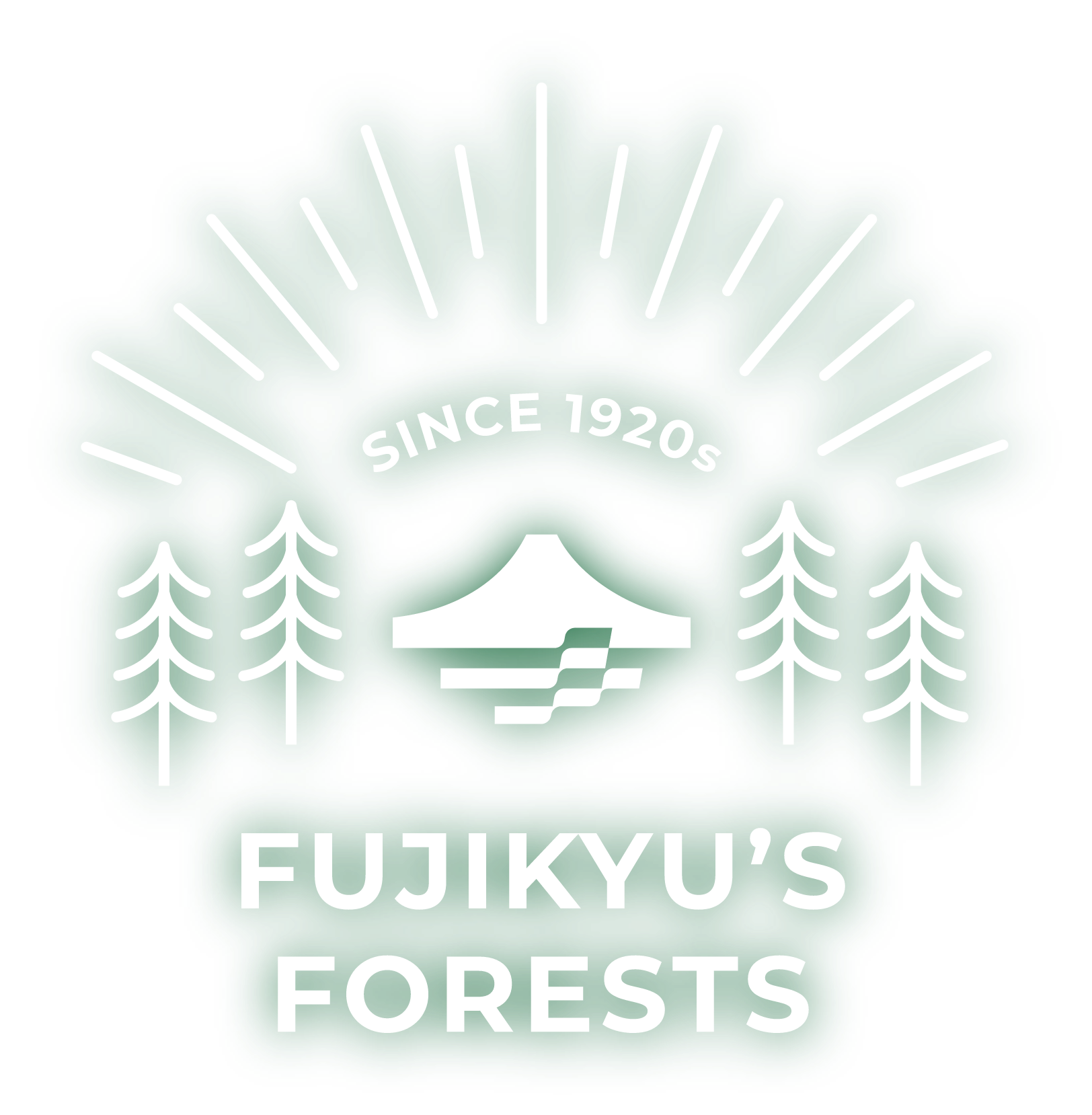

A century ago, the foot of Mt. Fuji was a rugged area covered in lava.
In accordance with its founding spirit of “expanding Mt. Fuji to the world,”
the Fujikyu Group has imported soil to the vast wilderness and cultivated forests there.
Here, we introduce the initiatives by which the Fujikyu Group has planted, nurtured, and protected the forests.
Living together with Mt. Fuji’s forests
Since ancient times, Mt. Fuji, a world heritage and symbol of Japan, has fascinated people as a sacred mountain harboring mysteries and an artistic wellspring.
Cherishing and coexisting with the splendid nature spreading out at the foot of the peak, we see our mission to be one of handing down the beautiful scenery of Mt. Fuji to posterity.

Habitat of diverse plants and animals
The forests of Mt. Fuji have a varied topography, including the Fuji Five Lakes and other ponds, rivers, and caves formed under the impact of eruptions. Many indigenous species of plants and animals live there, creating their own unique ecosystem.

Reaping the benefits of underground water
The rain falling on Mt. Fuji seeps slowly underground and then, 400 years later, bubbles to the surface.
These clear streams, enriched by minerals dissolved from the layers of volcanic rock, are loved by many people.

Afforestation begins with soil creation
The lush greenery at the foot of Mt. Fuji stems from not only the power of nature but also human will. In the past, we imported soil to land characterized by rugged scenery dotted with bare rocks and planted hundreds of thousands of trees there. The result was the Fujikyu’s Forests. Going forward, the Fujikyu Group will promote initiatives so that the area becomes loved by people around the world.

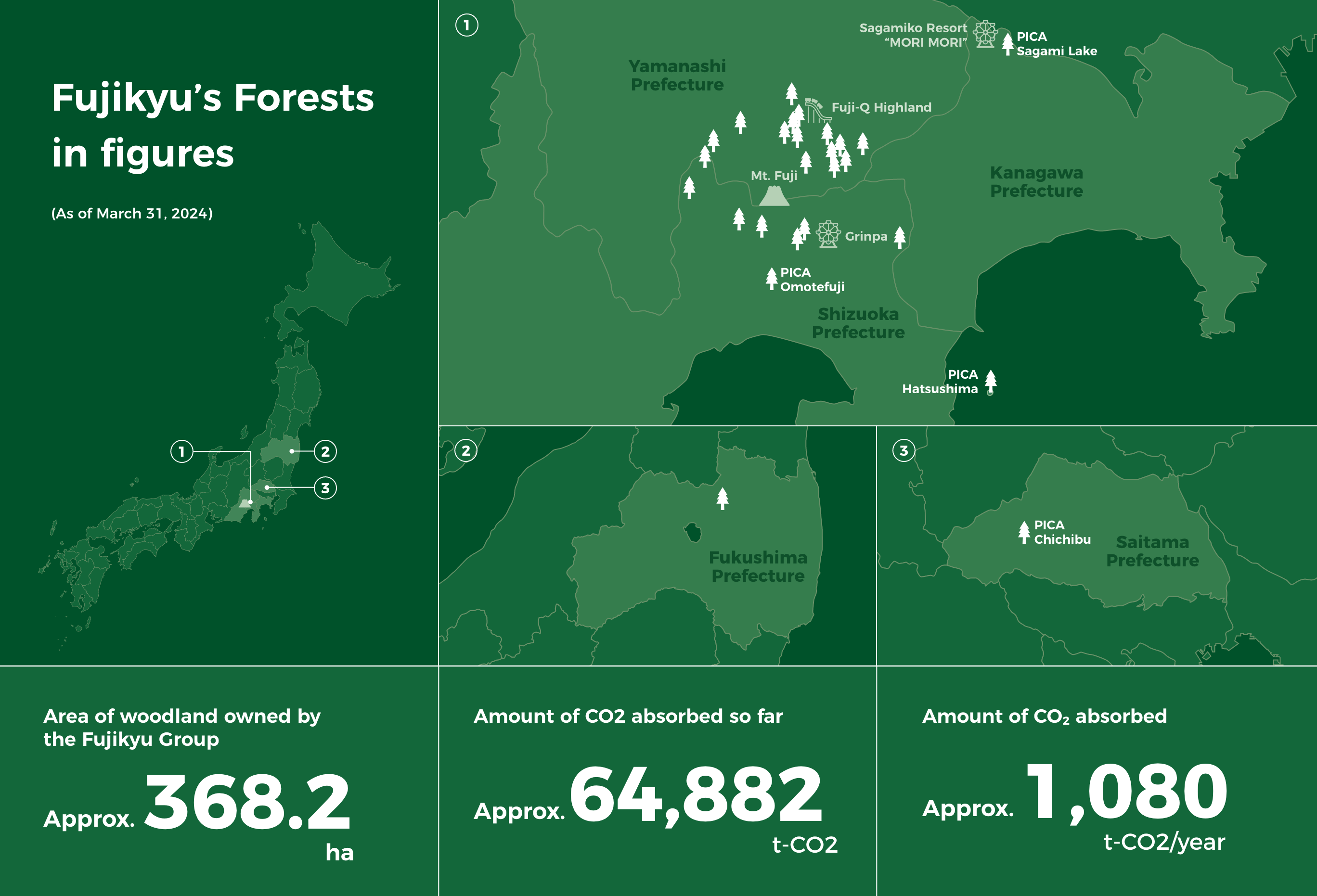

Main initiatives for maintenance and management
Fujikyu Commemorative Forest (Fujinomiya City)
In growing the forest, measures to prevent damage by deer, which love the new sprouts of plants and trees, are an urgent issue. Initiatives are carried out mainly by young employees, and we are promoting planned thinning too.
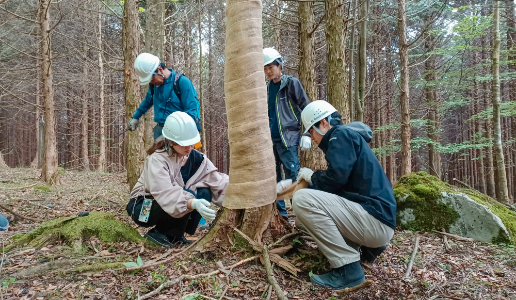
Corporate Forest
(municipal forest in Nishikatsura Town)
We are regularly promoting the planting of saplings. Moreover, we carry out the removal of undergrowth and bushes so that the saplings get sufficient sunlight to grow.
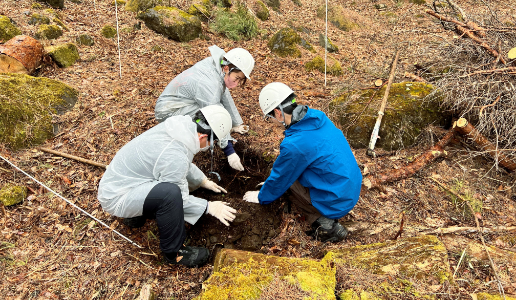
Lake Yamanaka tree planting land (prefectural land)
We borrowed about 2.3 ha of land from Yamanashi Prefecture for use as tree-planting land and, for nearly 100 years since then, have been conducting tree planting and maintenance.
Lake Sagami company forest
We have concluded a management consignment agreement with Seisho Forest Co., Ltd. and undertake periodic thinning. We also manufacture and sell products using timber obtained from thinning and domestic timber.
History of Fujikyu’s afforestation

Founding period1920–
Establishment of Fuji Sanroku Electric Railway Co., Ltd.
Fuji Sanroku Electric Railway Co., Ltd. (now Fuji Kyuko Co., Ltd.) was established in September 1926 out of a strong desire to introduce the scenery at the foot of Mt. Fuji broadly to people both in Japan and overseas and to contribute to regional development and environmental preservation. As the first step in development, with the aim of upgrading the transportation network, Fuji Sanroku Electric Railway set about building a full-fledged electric railway, and in 1929 the 23.6 km section between Otsuki Station and Fujiyoshida Station was opened.
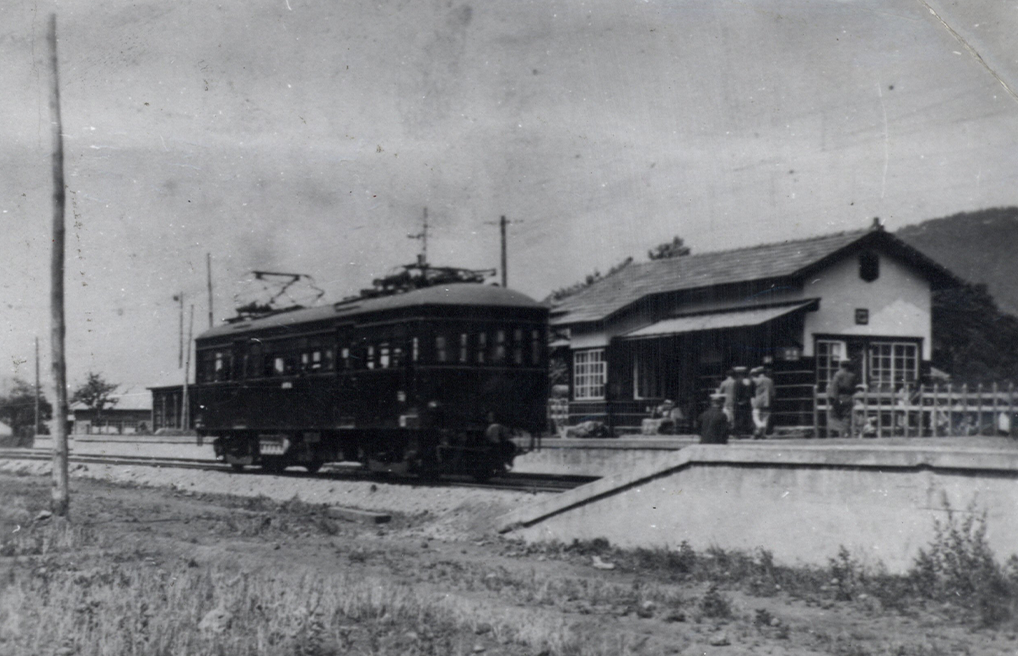
Higashikatsura Station at the time
Fuji Kyuko’s business began with the building of a transportation network. These are our roots as a comprehensive tourist company with mobility.

1930–
Opening of Fuji Golf Course
Fuji Golf Club (now Fuji Golf Course) opened in 1935.
Receiving a request from Yamanashi Prefecture, which was keen to achieve development and growth, Fuji Sanroku Electric Railway decided to build the first golf course in the prefecture. Generally speaking, the construction of a golf course involved cutting down woods and digging into mountains. However, Fuji Sanroku Electric Railway chose an entirely opposite formula for its tourist development. Beginning with the import of soil to cover the pitch-black lava wilderness, it then planted thousands of trees and built what is now a lush green course.
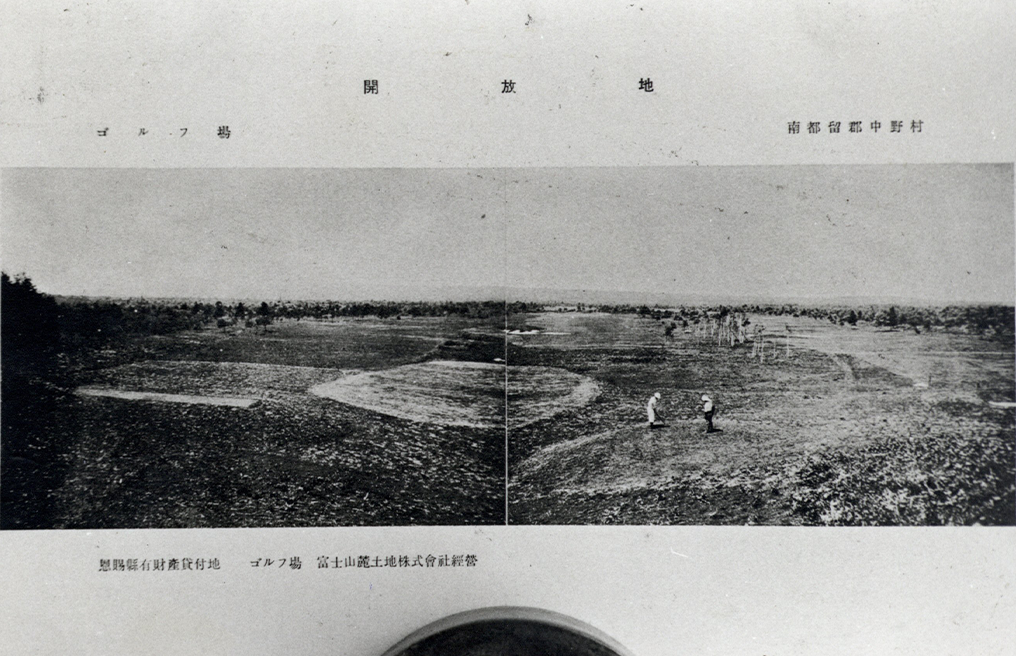
This aerial photo taken at the time of the golf course’s opening reveals just how bleak the lava area was.
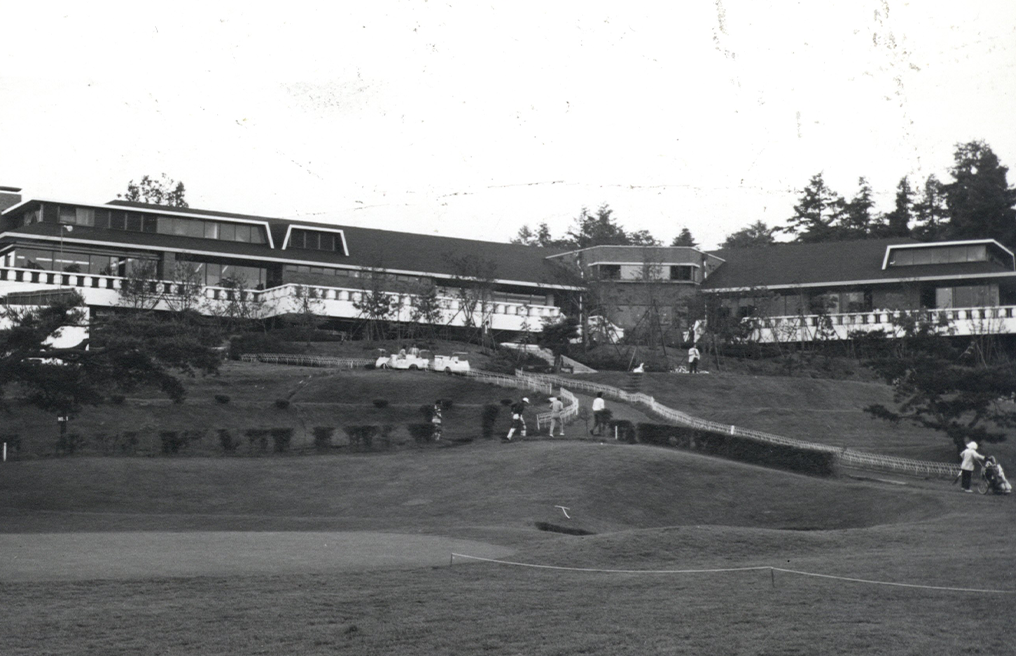
The golf course still had few trees, but it was from here that today’s lush green course took shape.

Period of growth and progress1960–
Grand Opening of Fuji-Q Highland
In May 1960 the name of the company was changed from Fuji Sanroku Electric Railway Co., Ltd. to Fuji Kyuko Co., Ltd. This marked an image change from a railway company to an enterprise engaged in both transportation and tourism. The area at the foot of Mt. Fuji had been a popular sightseeing spot in the summer. To develop it into a tourist spot that could be enjoyed throughout the year, Fuji Kyuko chose a building site in the lava area that was not suitable for either residence or farming.
Although the task of leveling the land proved difficult due to the extreme hardness of the rocky clumps of lava at the site, the Company brought in soil and, together with development, managed to plant azalea, mountain ash, and other trees suited to the locality everywhere in an area where there had been nothing but a few red pine trees with a height of just one or two meters. Beginning with a skating rink, the Company went on to build a hotel and ski slope, and in 1969 Fuji-Q Highland opened.
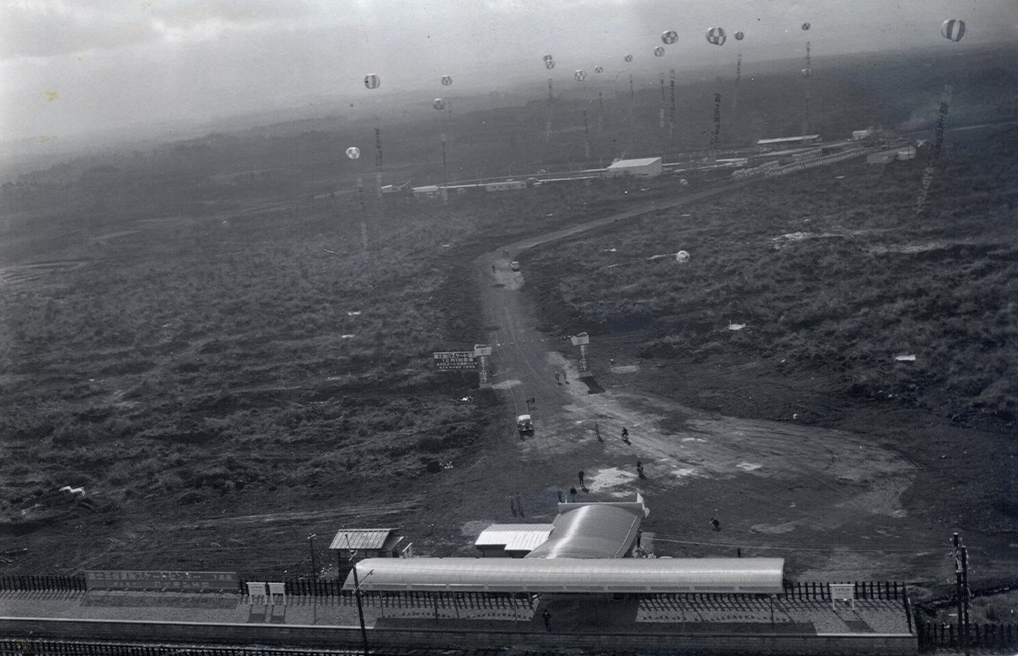
The Fuji Five Lakes International Skating Center (now Fuji-Q Highland) stands out against the surrounding pitch-black lava wilderness.
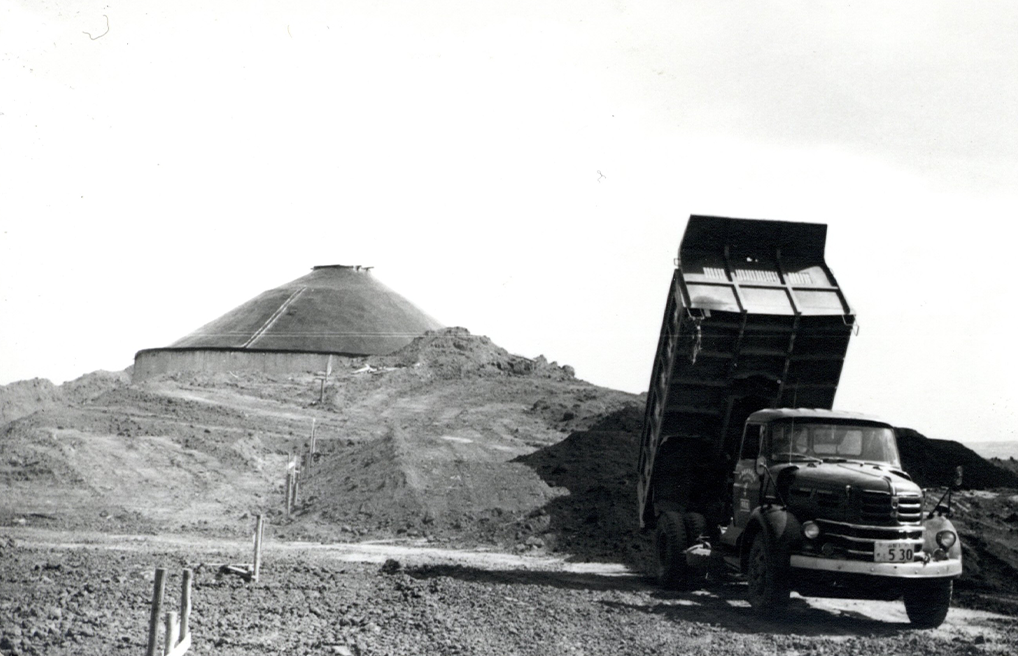
Soil importation

1970–
Fuji Kyuko 50th Anniversary Commemorative Project
Designating the period from April 8 to 15, 1976, as a greening and beautification campaign week, beginning with a tree-planting ceremony of Fujiyoshida City, the Fujikyu Group donated 1,000 saplings to around 30 places, including schools, parks, shrines, the municipal government offices, and the police station, with the aim of promoting the local community’s greening. Furthermore, the Group distributed 2,000 saplings to citizens at stations along the railway line and planted 6,000 trees on the Fujikyu Group’s business land.
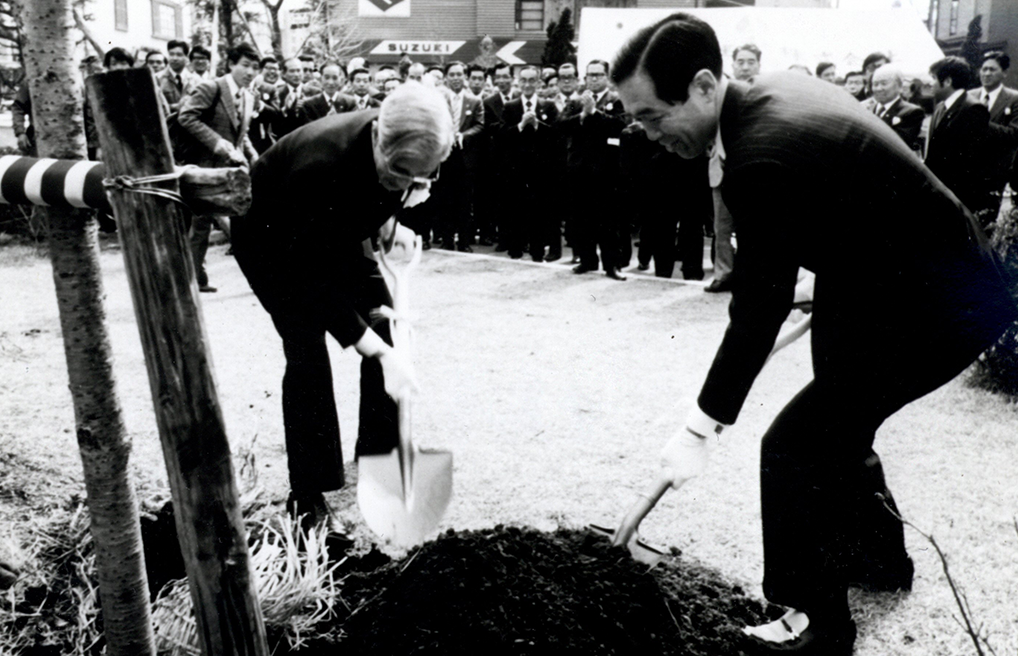
At a tree-planting ceremony in Fujiyoshida’s Kanadorii Civic Park on April 8, 1976, then Fujiyoshida Mayor Shigeru Ishihara and Fuji Kyuko President Mitsuo Horiuchi planted a tree themselves.

Period of development1990–
Development of the Fujikyu Commemorative Forest in Fujinomiya City
In 1991 we launched the Fujikyu Commemorative Forest project to mark the 65th anniversary of the Fujikyu Group. This project consisted of developing 2 hectares of national forest located at an altitude of 1,100 meters at the southern foot of Mt. Fuji. In this area we planted flowering trees suited to the natural environment of the mountain, including Fuji beech and Fuji cypress, as well as Fujizakura cherry trees and Japanese dogwood, which attract small birds. Even today, as a job for younger employees of Fuji Kyuko, we continue to take good care of this forest. The project will be completed in 2051, 60 years after it began.
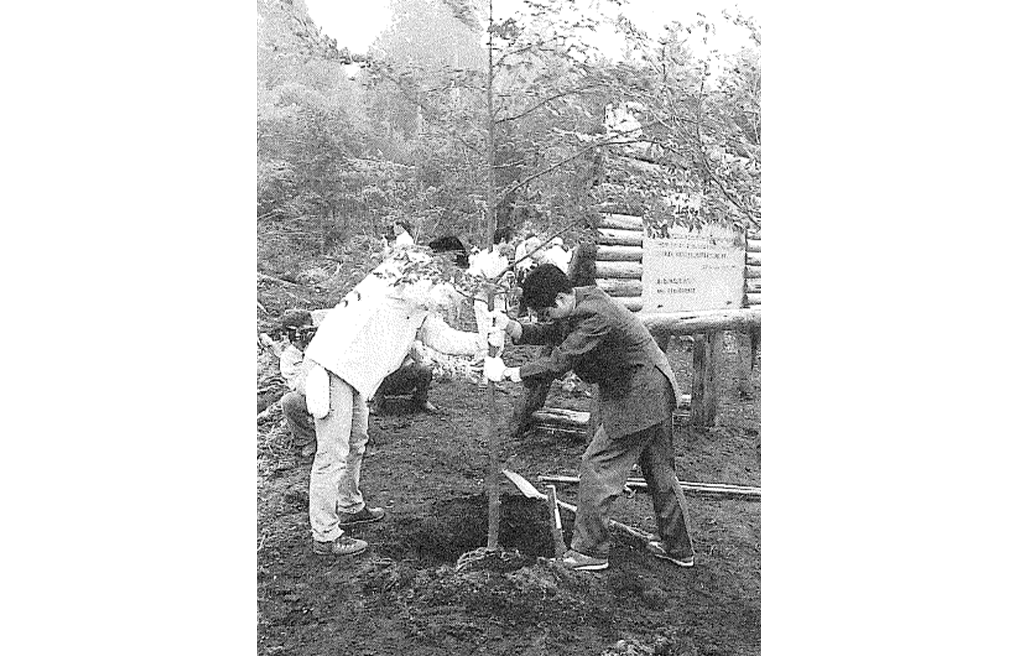
President and Representative Director Koichiro Horiuchi also took part in a tree-planting, inspired by a sense of responsibility and determination to protect and preserve the forest for a period of 60 years.

2000–
Aiming for a Sustainable Mt. Fuji
Since the turn of the century, environmental and social problems have been attracting increasing attention, and “sustainability” has become a household word.
The approach of the Fujikyu Group, however, has not changed one iota ever since the time of its founding. For nearly 100 years, we have continued our business while treasuring the natural environment of Mt. Fuji. Going forward, our unswerving aim remains one of contributing to the local community, promoting business in consideration of the environment, and realizing a sustainable society.
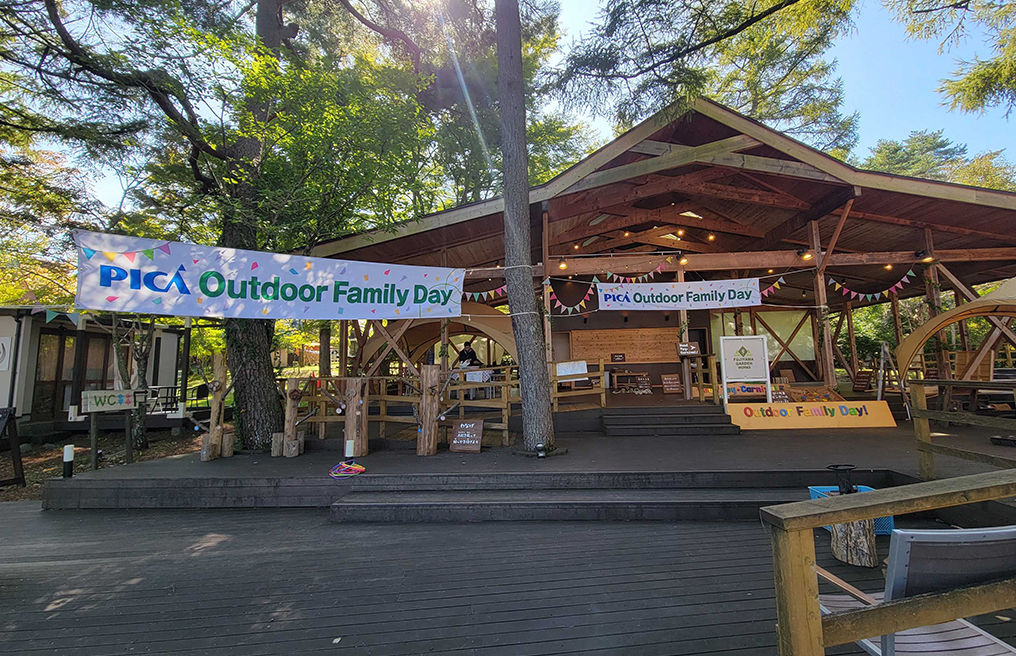
The PICA Outdoor Family Day in Lake Yamanaka event helps children to study and grow through outdoor experiences amid affluent nature.
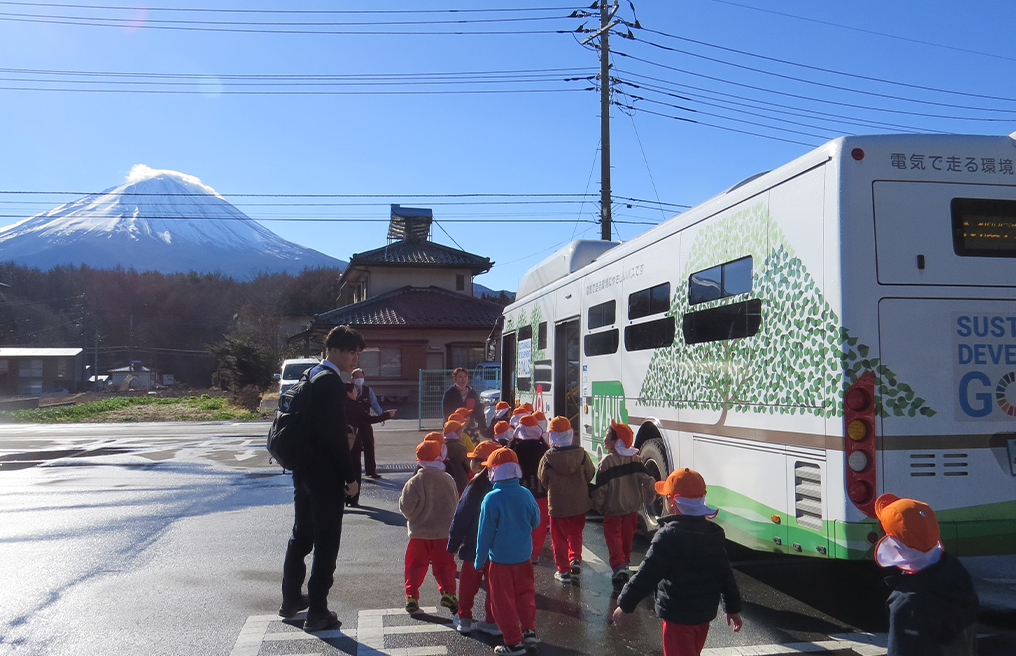
Using an electric bus, this class was held to teach local children how to ride on a bus.



